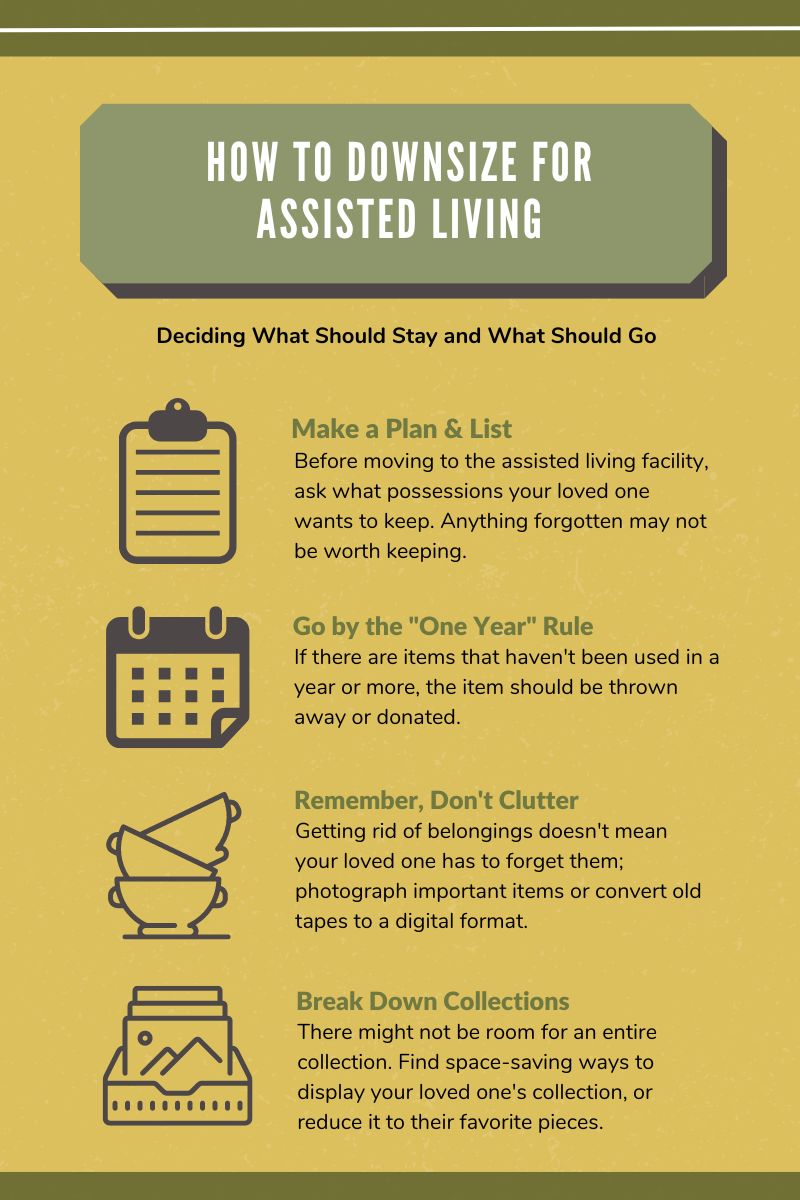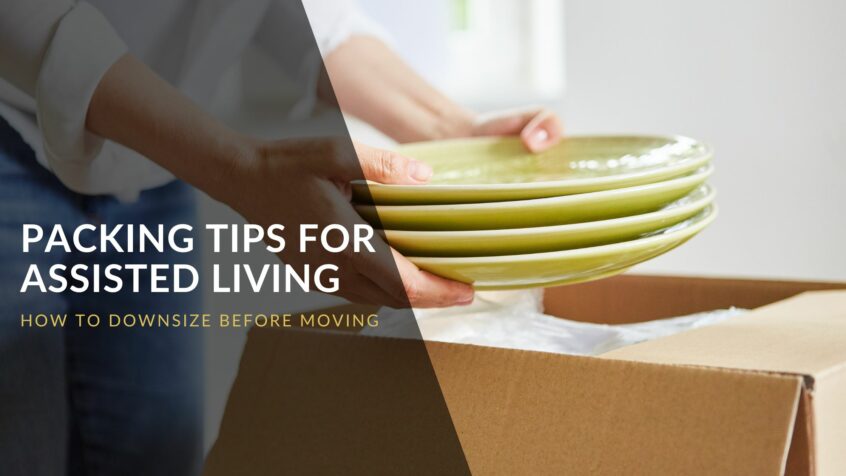Transitioning your loved one from their long-term home to an assisted living facility or memory care unit can be difficult. It’s understandable that many older adults find this transition scary and overwhelming—not only are they moving out of their familiar home, but assisted living or memory care apartments are typically smaller than their previous home.
Downsizing is an essential part of helping your loved one move into their new space, but it can also be one of the most difficult parts, especially if your loved one is experiencing memory issues. However, when done with compassion and care, downsizing can help your aging loved one make the most of their new space and can even help them see the move as a new, fresh start.
Downsizing Tips for Moving into Assisted Living

Your loved one’s new space, whether it’s an apartment in an assisted living facility or a room in memory care, will likely have less space than they are used to. While it may be tempting for your loved one to hold on to all their belongings, downsizing is essential for their safety and comfort.
Walkways need to be clear, allowing space for walkers or wheelchairs and for your loved one to navigate their space without tripping hazards. In extreme cases, excess clutter can even create fire hazards and make it difficult for emergency services to help your loved one in the event of a fall or medical emergency.
Downsizing your loved one’s belongings is a great opportunity to declutter or donate unused items. Before you begin, it’s a good idea to tour the new space or find a copy of the floor plan, so you and your loved one know how much space you have to work with. As you sort through their things, prioritize keeping belongings that are useful and highly sentimental.
Make a Plan of Action
Downsizing can be stressful if your loved one is not prepared for it. Set a plan for downsizing days, making sure to account for rest days between days of productivity to help keep your loved one from getting overwhelmed. Contact friends and family members before the downsizing days to make sure they’re available to help.
Make a List of “To Keep” Items
Another thing that may help your loved one downsize is to make a list of the things they want to keep before the downsizing process begins. Often, the urge to keep an item will be triggered after seeing the item; having a list of prioritized belongings can help your loved one keep their intentions clear. If they can’t remember the item, it may not be worth keeping.
Follow the “One Year” Rule
While working through their belongings, remind your loved one of the “one year” rule. If the item hasn’t been used in a year, there’s a high likelihood it can be tossed or donated. For example, if your loved one has a record player or empty flowerpots that haven’t been touched in a year, they likely won’t need them in their new space.
However, this rule should be used on a case-by-case basis. There may be items—like a favorite book—that haven’t been touched in a while but hold a lot of sentimental value and can be moved to your loved one’s new space.
Keep Memories, Not Clutter
If you come across sentimental items that are too big to move, taking photos of the items can help your loved one preserve the memories. Alternatively, gift these items to other family members so your loved one feels comfortable knowing treasured belongings have a home with someone familiar.
In the case of physical photo books or video tapes, consider converting them to a digital format to help save space.
Reduce Large Collections
If your loved one has collections, like rocks or figurines, they may be especially attached to those items. Consider a storage solution that transforms their collection into a work of art that they can display in their new home, like a trinket shelf or coffee display table.
If the collection is too large, work with them to downsize the collection to their favorite pieces.
Downsizing to Memory Care
If you’re helping a loved one downsize in preparation for a move to a memory care unit, you may face extra resistance. Try these tips to make the downsizing process go smoothly:
- Build trust by being respectful of their feelings
- Go slow and be patient
- Create a system and stick to it
- Keep photo albums and scrapbooks
- Emphasize the positive changes
- Go through highly emotional or sentimental items last
Moving In
When you help your loved one move into their new space, make sure they still have everything they need to live comfortably and happily. Especially for those moving into memory care, setting things up in a familiar manner can help ease the transition.
For example, set up their furniture in an arrangement similar to their previous home. Decorate with familiar photos of loved ones and their favorite belongings. If there’s room, encourage them to personalize their space with new books or art.
At Good Shepherd, we understand the transition to assisted living or a memory care unit can be difficult. Through open communication, community activities, and supporting your loved one’s transition, we do our best to ease your loved one’s shift to their new home.
To learn more about our assisted living or our memory care, visit our website or reach out to our Welcome Center at 320-259-3476.

